For “Winged Wednesday”:
Banded Ground-Cuckoo


“This secretive, ground-dwelling bird resembles a modern-day velociraptor. Birders lucky enough to spot it see a large, long-legged bird with glossy blue-black upperparts, chestnut wings and lower back, and banded underparts. Its song is a repeated, deep, cow- or dove-like moo.
Essentially a forest roadrunner, the Banded Ground-Cuckoo can cover great distances on its long legs, and maintains extensive territories. They feed on large insects flushed by army ant swarms and groups of forest mammals such as peccaries. The bird apparently can track multiple army ant groups simultaneously.
Habitat loss and degradation, particularly by the expansion of oil palm plantations, are the biggest threats to the species. Dependence on primary forest and a small, fragmented population make the Banded Ground-Cuckoo particularly vulnerable.
The species is protected in several large national reserves in Colombia and Ecuador. ABC partner Fundación ProAves protects a large block of forest in the Pangan Reserve in southern Colombia, and it is seen at the Canandé Reserve in Ecuador, owned by ABC partner Fundación Jocotoco.
Here is a video of a ground-cuckoo Un Poco del Chocó Reserve that the reserve owners are attempting to train to come when called.
Help ABC conserve this and other birds and their habitats!
Photo: Roger Ahlman; Range Map, NatureServe
__________
Sandy battered refuges, hampering migrating birds
“Superstorm Sandy dumped heavy rains, sending salt surges into fresh-water wildlife refuges.
USA TODAY. “When superstorm Sandy was rampaging up the East Coast Monday evening, biologists at the U.S. Fish and Wildlife Service were tracking via satellite radio a migrating Northern Gannet seabird trying to fly south into the force of the storm.
As the storm intensified at 6:30 p.m., the seagull-sized bird that had begun its journey off the coast of Nova Scotia gave up. The Gannet — whose species nests in caves and on rocks along the North Atlantic and flies to the Gulf of Mexico and Caribbean for the winter — reversed course near the southern coast of New Jersey, and headed back north toward Long Island. Eventually, it waited out the storm's aftermath 100 miles off the coast, a dramatic illustration of Sandy's natural disruption.
The E.B. Forsythe National Wildlife Refuge along the New Jersey coast, a popular destination for bird-watchers, is impassible and is closed indefinitely.
Damage from wind and heavy rain threatens to hamper vital resting areas for geese, ducks and other migrating birds this fall, and could invite invasive species and alter future migrations, according to Daniel Ashe, the director of the U.S. Fish and Wildlife Service.
One of the biggest fears is that Sandy's heavy ocean surges pushed salt water from the Atlantic Ocean into coastal freshwater refuges, which are vital rest stops for migrating birds. "A freshwater marsh is a precious commodity," Ashe said, adding that a deluge of salt water "removes the habitat for the migrating species. So it has an immediate impact. Secondly, it opens up the possibility of invasive species coming into these environments, both vegetative species and invertebrates." The latter effect could alter food sources for birds and affect future migration.” More at: http://www.usatoday.com/story/news/nation/2012/11/04/sandy-hits-migrating-birds-refuges/1677553/
_______
This Bird Migrated Into a Skyscraper
 “One overwhelming early morning, Flint Creek Wildlife treated 129 birds that had been gingerly collected off the sidewalks of downtown Chicago. It was fall migration season, and songbirds of all species were at it again, flying south for the winter and – many of them – along the way bumping into the city’s famously picturesque skyline.
“One overwhelming early morning, Flint Creek Wildlife treated 129 birds that had been gingerly collected off the sidewalks of downtown Chicago. It was fall migration season, and songbirds of all species were at it again, flying south for the winter and – many of them – along the way bumping into the city’s famously picturesque skyline. Nature is full of jaw-dropping examples of wildlife learning to adapt to the city (you’ve heard of birds that sing over car horns and coyotes that comprehend traffic). But this is not one of them. Chicago, like Toronto, happens to have grown up beneath one of the four major North American migratory flyways that birds follow up and down the continent each spring and fall. And a migratory flyway is too big a thing in nature to mold itself around our metropolises.
"The first year was this emotional rollercoaster."
That means that most nights about this time of year, birds collect on the ground in Chicago, about half of them still living, half of them not. The only reason you rarely see one is because groups like Flint Creek Wildlife Rehabilitation make a point of getting there first.
"It’s a busy, bustling city, right?" says Dawn Keller, who founded Flint Creek eight years ago. "When people are walking from the train station to work they’re not necessarily paying attention to a little 8-gram bird that’s sitting on the sidewalk." This is why volunteers go out before dawn, before the city wakes up.
Keller's has got to be the saddest volunteer job in the city: collecting warblers and kinglets in brown paper bags. Flint Creek has gotten to where it’s able to save about 90 percent of the initial crash survivors it finds, so this story has a sort-of happy ending. Keller says you have to focus on those guys. "If you didn’t," she says, "you’d never want to do this."
 In a given migratory season, five to eight million birds pass through Chicago, from 80-85 different species, most of them flying at night. And it’s perversely fascinating to realize what this city looks like from their point of view: trekandshoot / Shutterstock.com
In a given migratory season, five to eight million birds pass through Chicago, from 80-85 different species, most of them flying at night. And it’s perversely fascinating to realize what this city looks like from their point of view: trekandshoot / Shutterstock.com
“Birds are attracted to light, and lights in reflection – as with this Chicago nightscape – can be tremendously disorienting. Even when office towers dim their lights during migratory season, birds are still drawn to antennas.
"They’ll fly around the antenna, around the antenna, around the antenna," Keller says. "And they sort of get trapped in these beams of light. They don’t want to fly back out into the dark again, and they’ll actually die of exhaustion." More at: http://www.theatlanticcities.com/neighborhoods/2012/10/bird-migrated-skyscraper/3694/
--------
Decisions Imminent in Landmark Trials Over Toronto's Worst Bird Killing Buildings
 (Canada Warbler by Mark Hoffman, D.C., November 9, 2012)
(Canada Warbler by Mark Hoffman, D.C., November 9, 2012)
“Many of the 48 million Americans who enjoy bird watching will have a strong interest in the pending verdicts in two unprecedented lawsuits in Toronto, Canada. One of the deadliest threats to birds worldwide – building collisions – has, in a sense, been put on trial.
A verdict in the first trial, which began in April, 2011, is expected from Justice of the Peace William Turtle on November 14. It pits the owners of three adjoining glass office buildings – Consilium Place Towers – against two environmental groups – Ecojustice and Ontario Nature.
Those groups claim that the buildings, whose exterior faces are almost entirely glass, are responsible the deaths of about 7,000 birds in the last decade, making them likely the most deadly in the entire Greater Toronto area.” More at: http://www.abcbirds.org/newsandreports/releases/121109.html
--------
Songbirds vs. Skyscrapers: What Urban Dwellers Can Do to Help
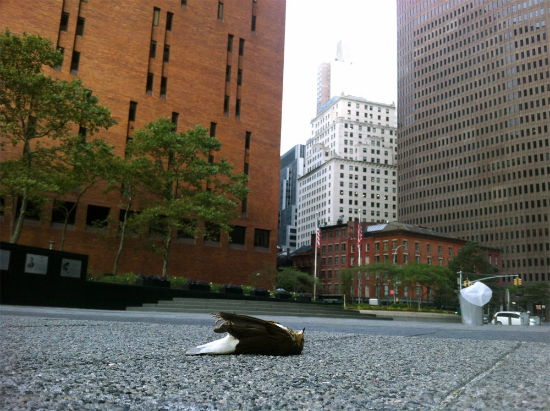
They lay where they fell, backs or bellies against the concrete, wings perfectly tucked, as though the work of a roving taxidermist. Photo Credit: Andrew Harmon
“In lower Manhattan this past weekend, I ran into four within 10 minutes. An American Goldfinch surrounded by cigarette butts at the corner of Wall Street and South. A juvenile American Robin lying supine near Hanover Square. A few blocks north, two White-throated Sparrows -- at the foot of my own apartment building.
Hear the term "bird strike" and you may think of Canada Geese flocks sucked into jet engines, causing such scenes as the emergency landing of U.S. Airways Flight 1549 into the Hudson River nearly four years ago. But there's another type of bird strike happening this season across the country, one that any early morning jogger setting out in New York and other cities likely has seen.
Birds can smash into windows at any time of day. Light pollution at night seems to compound the problem: Weary migrating birds can fall victim to the "beacon effect" of illuminated tall buildings, becoming disoriented, especially during poor weather. Though researchers have yet to conclude what causes this attraction to artificial light, what can happen as a result is despairing: finches, robins, sparrows, and other migrants crash into the facades, or circle structures until they fall to the ground from exhaustion. These birds are often snatched by other animals or swept up by cleaning crews before many of us hit the pavement for work in the morning.
Visit the Fatal Light Awareness Program's website, and it keeps a running tally on the approximate number of birds killed in window crashes since you arrived at the homepage. The number reaches into the thousands within seconds. In New York, located on one of four primary migration routes in North America, Audubon estimates that 90,000 birds die each year from flying into buildings and other structures.” More at: http://www.huffingtonpost.com/andrew-harmon/bird-strikes-nyc_b_1954920.html
_______
Natural Backyard Habitats Serve Birds Better
“A recent study of residential landscape types and native bird communities in Phoenix, Arizona, suggests that yards mimicking native vegetation and wild lands offer birds “mini refuges,” helping to offset the loss of biodiversity in cities and supporting birds better than traditional grass lawns and non-native plantings.”
A male house finch in Molt, Montana, photographed by National Wildlife Photo Contest competitor Jeanette Tasey. House finches are found across the continental United States and were among the four most common species observed in the Phoenix study.
“The researchers found that foraging birds fed at seed trays in moist yards more than did birds foraging in dry yards. Foragers in the desert-like yards quit the seed trays earlier because of a greater abundance of alternative food resources in those yards, spending more time foraging in the natural yard and less at the seed tray.
How You Can Help
You can help birds and other wild animals enjoy a more natural environment in your yard (and at your church, school and other community centers) by signing up with NWF’s Certified Wildlife Habitat® program.” More at: http://blog.nwf.org/2012/09/natural-backyard-habitats-serve-birds-better/
_______
Noise Pollution Turns Urban Birds Into Bad Parents
“It’s hard to be a parent. I’m not one myself, but I’ve seen my friends struggle to hold a conversation, open a car door or navigate the grocery store with kids in tow. There are always shoes to be tied, arguments to break up and fingers to be plucked away from the million dangerous objects within reach when you’re two feet tall and curious. Distractions, like talking on the phone or trying to watch a movie, only up the ante for disaster.
 Turns out, the same thing is true in nature. A recent study from the University of Sheffield found that noise from traffic, construction and power generators has a significant negative impact on the level of attention urban birds pay to their chicks. Experts say the noise drowns out the chirping of hungry chicks, leaving parents oblivious to the needs of their young.” Read more: http://www.care2.com/causes/noise-pollution-turns-urban-birds-into-bad-parents.html
Turns out, the same thing is true in nature. A recent study from the University of Sheffield found that noise from traffic, construction and power generators has a significant negative impact on the level of attention urban birds pay to their chicks. Experts say the noise drowns out the chirping of hungry chicks, leaving parents oblivious to the needs of their young.” Read more: http://www.care2.com/causes/noise-pollution-turns-urban-birds-into-bad-parents.html
______
Weekly Preview: November 11, 2012.
Owls, Wigeons, and Ravens
American Wigeon
SUNDAY
American Wigeon
by Dennis Paulson
LISTEN NOW ►
Common Raven
MONDAY
The Royal Ravens
by Bob Sundstrom
LISTEN NOW ►
Dark-eyed Junco
TUESDAY
The Return of the Snowbird
by Frances Wood
LISTEN NOW ►
WEDNESDAY
Birds Winter at the Salton Sea
by Dennis Paulson
LISTEN NOW ►
Great Gray Owl
THURSDAY
The Eyes of an Owl
by Bob Sundstrom
LISTEN NOW ►
Sandhill Cranes
FRIDAY
Bosque del Apache,
High Desert Oasis
by Bob Sundstrom
LISTEN NOW ►
Great Gray Owl
SATURDAY
The Ears of an Owl
by Bob Sundstrom
LISTEN NOW
From: http://hosted.verticalresponse.com/544840/c713a01f80/1654002543/b0eaa8d8cc/
_______
Photo Essay: A Northern Saw-Whet Owl sighting
“Bob and I went for a walk this afternoon here in Toronto, Ontario, in one of our local parks, and by chance, we spotted a Northern Saw-Whet Owl (Aegolius acadicus) at rest in the thick brush. I have never seen an owl in the wild before, and certainly not one in such close proximity. We have frequented this park for years, and this is the first time we were lucky enough to catch sight of one……..”
Read more about this and see the beautiful photos at: http://frametoframe.ca/photo-essay-northern-saw-whet-owl-sighting/ More essays about many other birds too.
_______
On This Day:
Lincoln approves Burnside's plan to capture Richmond, Nov 14, 1862:
“On this day in 1862, President Abraham Lincoln approves of General Ambrose Burnside's plan to capture the Confederate capital at Richmond, Virginia. This was an ill-fated move, as it led to the disastrous Battle of Fredericksburg in Virginia in December 1862, in which the Army of the Potomac was dealt one of its worst defeats at the hands of Confederate General Robert E. Lee's Army of Northern Virginia.
Lincoln approved Burnside's plan just five days after Burnside assumed command of the army. The general had replaced George McClellan, who led the force for more than a year. McClellan's tenure was marked by sharp disagreements with the administration and sluggishness in the field. Although McClellan was successful against Lee at the Battle of Antietam in Maryland on September 17, 1862, Lincoln removed him from command because of McClellan's reluctance to attack the Confederate army in Virginia.
After McClellan was removed, Burnside stepped up to take his shot at Lee. His plan called for the Army of the Potomac to move some 40 miles to Fredericksburg on the Rappahannock River. From there, his troops would advance south to the Confederate capital of Richmond. Lincoln appreciated the fact that Burnside's plan protected Washington, D.C. In spring 1862, McClellan had sailed the army down the Chesapeake Bay and landed it on the James Peninsula for an attempt on Richmond, a move that left the Union capital dangerously exposed. However, Lincoln and general in chief Henry Halleck were concerned that Burnside was focused solely on capturing Richmond; they believed that the goal should be to destroy Lee's army. However, Burnside's plan was an improvement over McClellan's operations.
Lincoln approved the plan but warned Burnside that action needed to be taken quickly. By early December, Burnside had the army in motion. When the Yankees reached Fredericksburg, however, they experienced delays in crossing the Rappahannock, which allowed Lee to move his forces into place above the city. On December 13, Burnside made a series of doomed attacks and the Army of the Potomac suffered one of the most costly and demoralizing defeats of the war.”
_______
Apollo 12 lifts off, Nov 14, 1969:
“Apollo 12, the second manned mission to the surface of the moon, is launched from Cape Canaveral, Florida, with astronauts Charles Conrad, Jr.; Richard F. Gordon, Jr.; and Alan L. Bean aboard. President Richard Nixon viewed the liftoff from Pad A at Cape Canaveral. He was the first president to attend the liftoff of a manned space flight.
Thirty-six seconds after takeoff, lightning struck the ascending Saturn 5 launch rocket, which tripped the circuit breakers in the command module and caused a power failure. Fortunately, the launching rocket continued up normally, and within a few minutes power was restored in the spacecraft.
On November 19, the landing module Intrepid made a precision landing on the northwest rim of the moon's Ocean of Storms. About five hours later, astronauts Conrad and Bean became the third and fourth humans to walk on the surface of the moon. During the next 32 hours, the two astronauts made two lunar walks, where they collected lunar samples and investigated the Surveyor 3 spacecraft, an unmanned U.S. probe that soft-landed on the moon in 1967. On November 24, Apollo 12 successfully returned to Earth, splashing down only three miles from one of its retrieval ships, the USS Hornet.”
_______
Yesterday:
As it was rather cold first thing, I didn’t even attempt to stand out in the cold washing the rest of the cellular shades. Anyway, I was too busy helping Ray move things so he could paint part of my bedroom. Having nowhere to put them, nor the inclination to move furniture or the big TV very far, we just moved them away from the wall far enough to get a step ladder in there. Fortunately the ceiling doesn’t need painting.
This wall took a long time, as it has the TV cable, TV box, my TV, Internet modem, router, phone outlet, three 110v. outlets, so there are wires and cables strung everywhere. The internet is then run to another room.
While Ray was painting, I cleaned mirrors, patio doors, and windows in the living room, but still didn’t get them all. People who live in glass houses can’t get it all done in one day.
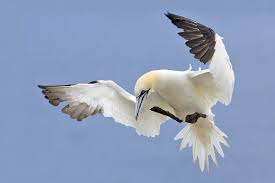

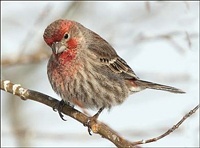






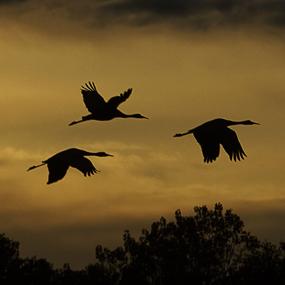
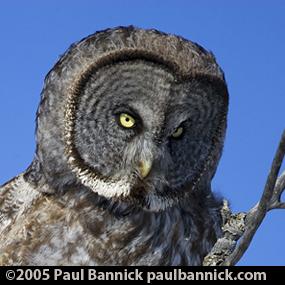
















1 comment:
Sounds like too much work to me.
Post a Comment